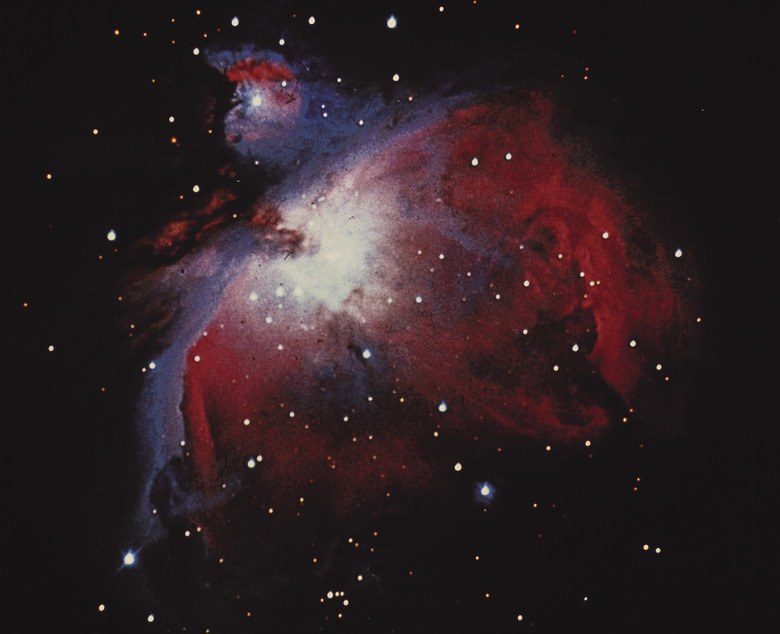Which Is The Primordial Nebula?
Nebulae are interstellar clouds of gas and dust, and the Hubble Space Telescope has revealed the existence of many throughout the Milky Way. Edwin Hubble, for whom the telescope is named, established that clouds existed beyond the Milky Way, but scientists later recognized these as independent galaxies different from nebulae within the Milky Way. According to a popular theory, the solar system is the result of the gravitational collapse of one such primordial nebula.
The Primordial Nebula Hypothesis
The Primordial Nebula Hypothesis
The primordial nebula hypothesis helps scientists explain the origin of the solar system. According to this hypothesis, a slowly revolving cloud of dust, ice and gas — the primordial nebula — began to contract and eventually formed into a disk. As the disk collapsed and began to spin faster, most of its mass localized at the center and grew hotter, eventually becoming the sun. One possible reason for the initial collapse of the cloud is the shock wave from a nearby supernova.
Formation of the Planets
Formation of the Planets
As the primordial nebula flattened into a disk and most of its mass gravitated to the center, small chunks of matter further from the middle of the disk — called planetesimals — began to collide and to attract dust and rock to eventually grow into planets and moons. This explains why the planets all revolve in nearly circular orbits, moving in the same direction and in the same plane. In turn, the theory shows why the inner, or terrestrial, planets are rocky while the outer, or Jovian, ones are gaseous, owing to the abundance of ice and gas as planet-forming elements in the outer fringes of the disk.
The Inner and Outer Solar System
The Inner and Outer Solar System
According to the theory, the planetesimals closer to the nascent sun were primarily composed of rock and metal, materials that formed about 0.6 percent of the material in the disk. Hence, these could not form very large planets and, because their gravitational pull was small, could not attract much free hydrogen and helium gas. Farther from the sun, planetesimals formed from ice as well as rock, and since there was more ice, they could form larger planets with thick hydrogen and helium atmospheres surrounding their rocky cores. Kuiper belt comets on the outskirts of the solar system are the raw material for planetesimals. They never form into planets because their density is too low.
Unexplained Details
Unexplained Details
The primordial nebula theory is not complete and doesn't explain how the terrestrial planets formed atmospheres. It also doesn't explain why Venus spins backwards or why the axes or rotation of Uranus and dwarf planets Pluto and Charon are perpendicular to those of the other planets. The highly eccentric orbit of Pluto/Charon is another anomalous detail, but the twin dwarf planets could be wanderers that interacted with Neptune and the other Jovian planets to settle into their present orbit. One other important question that the primordial nebula theory doesn't address is how life arose on Earth.
Cite This Article
MLA
Deziel, Chris. "Which Is The Primordial Nebula?" sciencing.com, https://www.sciencing.com/primordial-nebula-4353/. 24 April 2017.
APA
Deziel, Chris. (2017, April 24). Which Is The Primordial Nebula?. sciencing.com. Retrieved from https://www.sciencing.com/primordial-nebula-4353/
Chicago
Deziel, Chris. Which Is The Primordial Nebula? last modified August 30, 2022. https://www.sciencing.com/primordial-nebula-4353/
